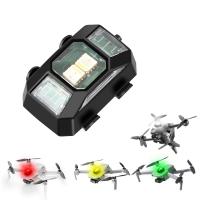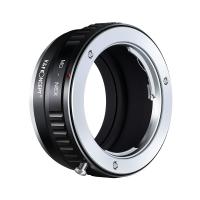How Do I Access Smart Lock Settings?
Smart locks have revolutionized the way we think about home security and accessibility. They provide convenience, flexibility, and enhanced security features, all managed from the palm of your hand. However, accessing and configuring smart lock settings can sometimes be a challenge for new users or those unfamiliar with the nuances of smart home technology. This guide will walk you through the essential steps to access and adjust smart lock settings, troubleshoot common issues, and maximize their potential.
---
Understanding the Basics of Smart Locks
Smart locks are electronic locks that integrate with your smartphone, smart hub, or home automation systems. They allow you to lock and unlock doors without a physical key, monitor access, and sometimes even integrate with voice assistants like Alexa, Google Assistant, or Siri.
Each smart lock has its own unique set of features and user interface, which means the process for accessing settings may vary slightly depending on the brand and model. However, most smart locks share a similar setup process and basic functionality.
---
Step-by-Step Guide to Accessing Smart Lock Settings
1. Download the Companion App
- Almost every smart lock requires a proprietary mobile app to access and configure its settings.
- Search for the app in the App Store (iOS) or Google Play Store (Android) based on the brand of your smart lock (e.g., August, Schlage, Yale, or Kwikset).
- Install the app and create an account if you don’t already have one.
2. Pair Your Smart Lock with the App
- Follow the manufacturer's instructions to connect your smart lock to the app.
- Ensure Bluetooth, Wi-Fi, or Zigbee/Z-Wave (depending on the lock type) is enabled on your smartphone.
- Initiate the pairing process within the app, often by pressing a button on the lock and following on-screen instructions.
3. Navigate to Settings
- Open the app and select your connected smart lock from the dashboard or devices list.
- Look for a "Settings" or "Manage Lock" option. This is typically located in the menu or under the specific device's details.
4. Adjust Lock Settings
Once in the settings menu, you can:
- Manage Users: Grant or revoke access to specific individuals.
- Set Lock/Unlock Schedules: Define times for automatic locking or unlocking.
- Customize Alerts: Configure notifications for when the lock is used or tampered with.
- Update Firmware: Check for software updates to enhance performance and security.
- Integrate with Other Systems: Link the lock to your smart home ecosystem or voice assistant.
---
Troubleshooting Common Issues in Accessing Settings
Despite their convenience, smart locks can present occasional hiccups, particularly when accessing or adjusting settings. Here are some common challenges and solutions:
1. Connection Problems
- Symptom: The app fails to detect the lock.
- Solution:
- Ensure your smartphone's Bluetooth, Wi-Fi, or hub is active and functioning.
- Check the lock's battery level; low power can hinder connectivity.
- Restart the app and try reconnecting.
2. Forgotten App Credentials
- Symptom: You can’t log in to the app.
- Solution: Use the app’s password recovery option or contact customer support if necessary.
3. Outdated Firmware
- Symptom: Limited functionality or unresponsive features.
- Solution: Navigate to the lock settings and perform a firmware update.
4. Syncing Errors
- Symptom: Changes made in the app don’t reflect on the lock.
- Solution: Ensure the lock is within range of the controlling device or hub. Re-sync the device by disconnecting and reconnecting it.
---
Tips to Maximize the Benefits of Smart Lock Settings
To get the most out of your smart lock, consider the following recommendations:
1. Regularly Update Firmware
- Firmware updates often include patches for vulnerabilities and improvements to functionality.
2. Customize User Permissions
- Assign unique access codes or app-based permissions to family members, guests, or service personnel. This ensures you have a clear record of who accesses your property and when.
3. Integrate with Home Automation
- Connect your smart lock with systems like Google Home, Apple HomeKit, or Amazon Alexa for voice commands or automated routines (e.g., locking all doors when leaving the house).
4. Enable Security Features
- Activate two-factor authentication for your app account to prevent unauthorized access.
- Use auto-lock features to ensure your door locks automatically after a set period.
5. Monitor Usage History
- Review activity logs through the app to identify potential security concerns or monitor household access patterns.
---
Addressing Privacy and Security Concerns
While smart locks offer unparalleled convenience, they can raise concerns about security vulnerabilities. Here’s how to mitigate these risks:
1. Secure Your Network
- Use strong, unique passwords for your Wi-Fi and associated smart home accounts.
- Consider setting up a guest network for smart devices to isolate them from personal data.
2. Beware of Physical Tampering
- Choose a smart lock with robust physical security features (e.g., ANSI Grade 1 or 2 rating).
- Regularly inspect the lock for signs of tampering or wear.
3. Regularly Review Access Permissions
- Periodically update or revoke access permissions for users who no longer need them.
---
Accessing and configuring smart lock settings is a straightforward process that opens the door (literally and figuratively) to a more secure and convenient lifestyle. By following the steps outlined above, you can effectively manage your smart lock, troubleshoot common issues, and enhance the safety of your home.
As technology evolves, so do the capabilities of smart locks. Staying informed about updates, features, and best practices ensures you can take full advantage of your smart lock while keeping your property safe and secure. Whether you’re a tech enthusiast or a smart home beginner, mastering smart lock settings is an essential step toward smarter living.






































There are no comments for this blog.